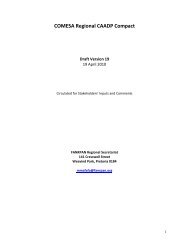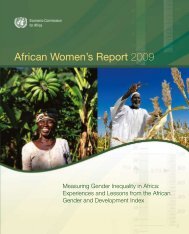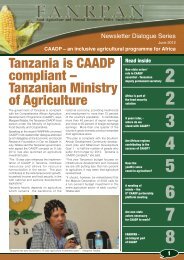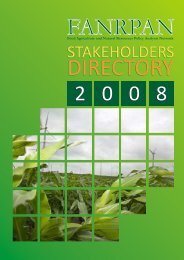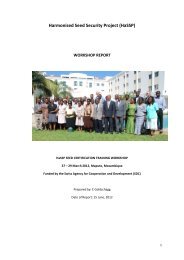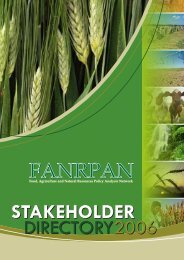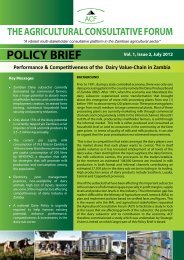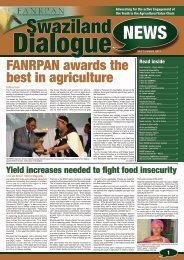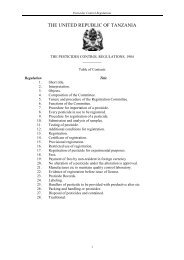Community-driven development decision tools for rural - IFAD
Community-driven development decision tools for rural - IFAD
Community-driven development decision tools for rural - IFAD
- No tags were found...
You also want an ePaper? Increase the reach of your titles
YUMPU automatically turns print PDFs into web optimized ePapers that Google loves.
territory that may include several villages. Other models establish a Cbank at the village level thatincludes village residents as members.In the medium term, the Cbanks’ sustainability rests on their capacity to fully recover theloans they make with capital raised from their members, the government or private donors. Inthe long run, however, Cbanks’ financial sustainability largely depends on their capacity tomobilize local savings and promote the <strong>for</strong>mation and growth of an orderly local financialmarket. Cbanks can contribute significantly to achieving this if they are adequately supportedby government policy and the Central Bank’s views regarding their role in savings collectionand management.In many developing countries, the current thinking is that in order to protect people’s savings,Cbanks should not be allowed to accept and manage cash deposits; they should only lendgovernment or privately donated funds and secure adequate control of loan delinquencies. Thisview is influenced by some negative experiences that followed the liberalization of the financialservices sector in the mid-1980s, when many private financial services organizations wereestablished in a legislative vacuum and were short-lived. This view holds that corporateorganizations of a reasonable size with a solid capital base should engage in microcredit andcollect local savings. These organizations are essentially urban and require special skills indealing with the <strong>rural</strong> environment. Under this option, Cbanks would at best be contractorsworking <strong>for</strong> a local branch of the exogenous institution.Another view points to the long and successful history of the cooperative movement inmany countries. This shows that networks of Cbanks, built from the community level, can beefficient and effective providers of financial services in <strong>rural</strong> areas and protectors of people’savings 35 if they are allowed to emerge and grow within an orderly, but favourable,institutional environment.Cbanks (or their first level apex associations) that wish to establish business relations with thecommercial banking system must accept the <strong>for</strong>mal controls that satisfy such institutions.Controls must not jeopardize the Cbanks’ ability to make autonomous <strong>decision</strong>s and standardsshould be attainable by the members of their elected management committees.<strong>IFAD</strong>’s <strong>rural</strong> financial services CDD projects must establish some <strong>for</strong>m of partnership with theCentral Bank and with the specialized national financial institutions interested in developing<strong>rural</strong> financial markets. The relationship with the Central Bank should concern creating policiesand institutions that create an enabling environment <strong>for</strong> developing <strong>rural</strong> financial markets. Insuch an environment, Cbanks and their first level associations would be allowed to handle anadequate range of products, including savings deposits, and they would have to respectaccounting, reporting and other standards that guarantee sound and rigorous use of funds whilebeing within reach of what their MCs can be trained to do.Venue <strong>for</strong> policy dialogueCivil servants and local political intermediaries do not easily accept, and often oppose,innovations in institution building (even when those innovations are <strong>for</strong>mally accepted by thecentral government) because they are bound to affect vested interests often well entrenched inpublic administrations. This opposition may take visible and invisible <strong>for</strong>ms and exercisepressure on PCU staff who are often confused about how to implement the CDD approach.Without strong direction, CDD projects tend to slide back into the pattern of conventional topdownand centrally-run <strong>rural</strong> <strong>development</strong> projects and community participation andempowerment are sidelined. 3635 One emblematic example is CAMCUL, the sizeable Cameroon cooperative bank that was the only private or public commercialfinancial institution to survive two consecutive bankruptcy cycles during the 1990s.36 There are many examples of this, such as OASIS I in Mauritania and the Rwanda Umutara projects.61



